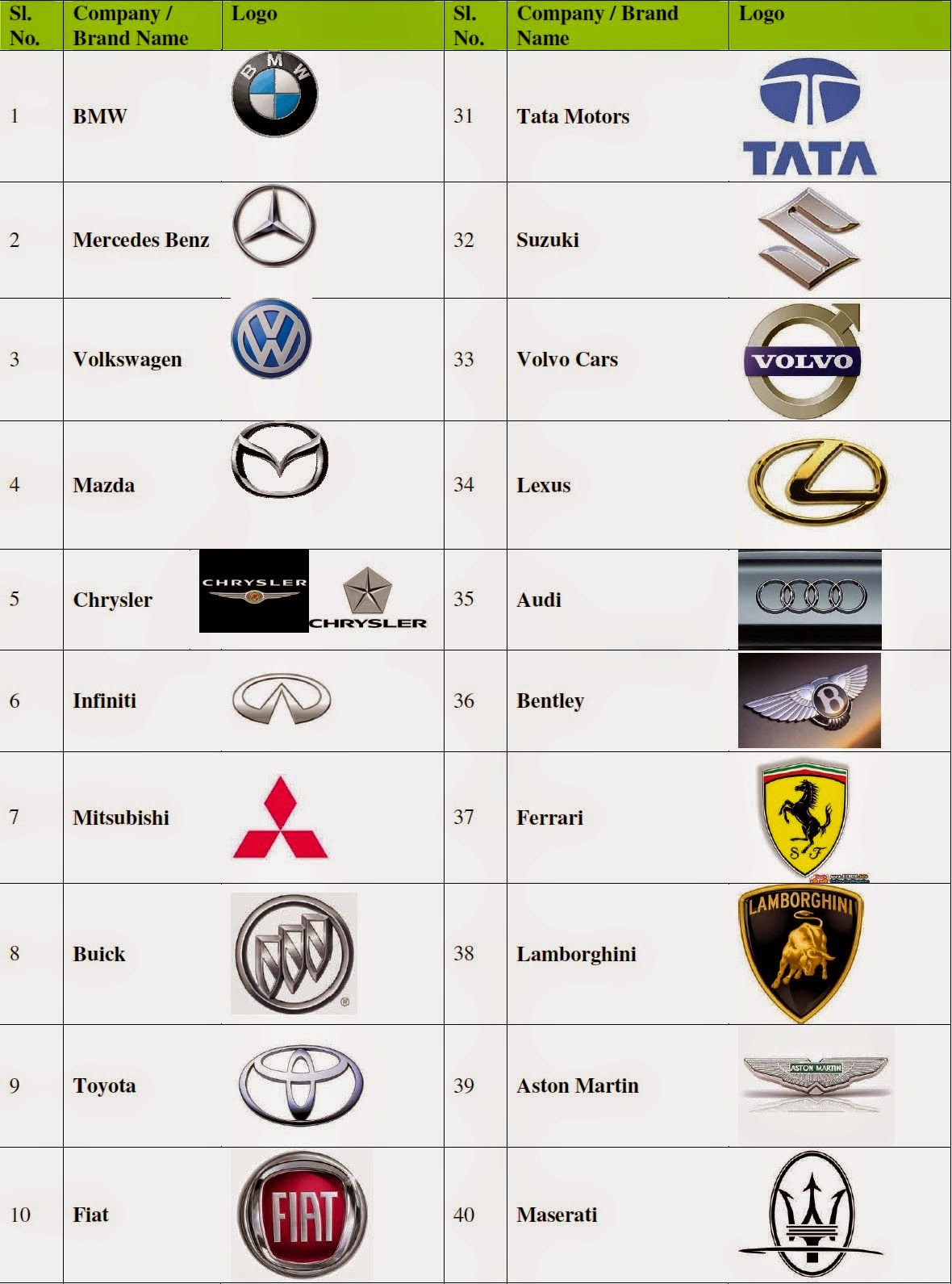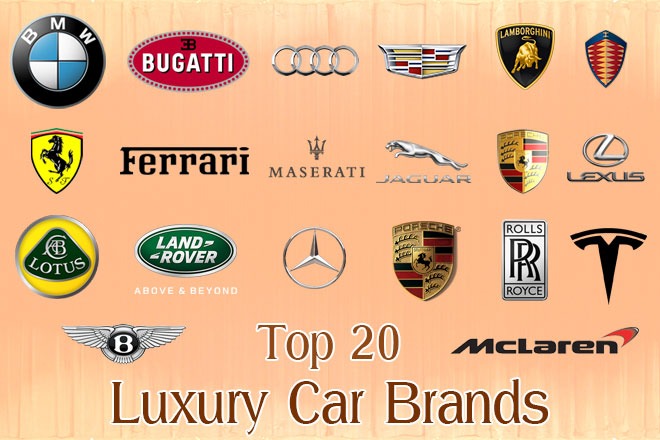Cars And Brands: A Comprehensive Guide to Automotive Identity and Innovation
Cars And Brands: A Comprehensive Guide to Automotive Identity and Innovation cars.truckstrend.com
In the vast and dynamic world of automobiles, the relationship between "cars" and "brands" is far more profound than a simple label on a vehicle. It’s a symbiotic dance between engineering prowess and marketing genius, heritage and innovation, utility and desire. A car, at its core, is a machine designed for transport, but a brand transforms that machine into an experience, a statement, and often, a part of one’s identity. Understanding this intricate connection is crucial for anyone navigating the automotive landscape, whether as a prospective buyer, an enthusiast, or a curious observer.
This article delves deep into the essence of cars and the brands that define them, exploring how a brand’s philosophy shapes everything from a vehicle’s design and performance to its perceived value and target audience. We’ll uncover the layers that make a brand more than just a logo, offering practical insights and a comprehensive overview of an industry constantly in motion.
Cars And Brands: A Comprehensive Guide to Automotive Identity and Innovation
The Anatomy of a Car Brand: Beyond the Badge
A car brand is not merely a name; it’s a promise, a heritage, and a distinct personality. It encompasses a complex interplay of elements that collectively define its identity and market position:
- Heritage and Story: Many brands leverage a rich history of innovation, racing success, or iconic models. This narrative builds trust and emotional connection. Think of Ferrari’s racing pedigree or Mercedes-Benz’s century-long pursuit of luxury and engineering excellence.
- Design Language: Each brand typically adheres to a recognizable aesthetic. BMW’s kidney grille, Audi’s singleframe, or Volvo’s minimalist Scandinavian lines are examples of consistent design elements that instantly identify a brand.
- Engineering Philosophy: This dictates how a car is built and how it drives. Toyota is renowned for reliability and efficiency, while Porsche is synonymous with precision engineering and driving dynamics. Subaru emphasizes all-wheel drive and boxer engines.
- Target Audience and Positioning: Brands strategically position themselves to appeal to specific demographics. Rolls-Royce targets ultra-luxury buyers, while Kia focuses on value, modern design, and comprehensive warranties for the mainstream consumer.
- Marketing and Perception: Advertising, sponsorships, and public relations all contribute to how a brand is perceived. A brand’s image might be associated with rugged adventure (Jeep), sophisticated luxury (Lexus), or cutting-edge technology (Tesla).
- Innovation and Technology: Brands differentiate themselves through their commitment to new technologies, whether it’s advanced safety features, infotainment systems, electric powertrains, or autonomous driving capabilities.

Ultimately, a brand is a carefully constructed identity that communicates its values, capabilities, and aspirations to the world, influencing consumer choice far beyond the vehicle’s specifications.
Major Automotive Segments and Their Defining Brands
The automotive market is broadly segmented, with different brands dominating specific niches. Understanding these categories helps in recognizing a brand’s core strengths and typical offerings:

- Economy/Budget Brands: Focus on affordability, practicality, and fuel efficiency. These vehicles offer essential transportation without many frills.
- Examples: Dacia, Chevrolet (entry-level models), some entry-level Hyundai/Kia models.
- Mainstream/Volume Brands: The largest segment, offering a wide range of vehicles from compacts to SUVs and trucks, prioritizing reliability, value, and general utility.
- Examples: Toyota, Honda, Volkswagen, Ford, Hyundai, Kia, Nissan, Mazda, Chevrolet.
- Premium/Near-Luxury Brands: Bridge the gap between mainstream and luxury, offering elevated comfort, more advanced technology, and better performance than volume brands, but at a more accessible price point than true luxury.
- Examples: Acura, Infiniti, Volvo, Genesis, Buick.
- Luxury Brands: Emphasize prestige, superior materials, advanced technology, refined driving dynamics, and often a personalized ownership experience.
- Examples: Mercedes-Benz, BMW, Audi, Lexus, Cadillac, Porsche (many models).
- Performance/Sports Car Brands: Dedicated to exhilarating driving experiences, speed, and cutting-edge automotive engineering. Design is often focused on aerodynamics and aggression.
- Examples: Ferrari, Lamborghini, McLaren, Aston Martin, Porsche (performance models), Chevrolet Corvette.
- Ultra-Luxury/Bespoke Brands: The pinnacle of automotive exclusivity, offering unparalleled opulence, craftsmanship, and extensive customization options, often hand-built.
- Examples: Rolls-Royce, Bentley.
- Off-Road/Utility Brands: Specialize in rugged vehicles designed for challenging terrains, emphasizing durability, ground clearance, and robust powertrains.
- Examples: Jeep, Land Rover, Subaru (known for AWD and outdoor lifestyle).
- Electric Vehicle (EV) Innovators: While many traditional brands now offer EVs, new players have emerged focusing solely on electric powertrains and software integration.
- Examples: Tesla, Rivian, Lucid, Nio, Polestar (initially a Volvo sub-brand, now distinct).

The Brand’s Influence on Car Design, Engineering, and Technology
The brand’s identity is not just skin deep; it permeates every aspect of a car’s development:
- Design and Aesthetics: A brand’s design language dictates the visual appeal. Mercedes-Benz aims for elegant sophistication, BMW for sporty aggression, and Volvo for understated modernity. These visual cues are consistent across their model lines, reinforcing brand recognition.
- Engineering Philosophy: Different brands prioritize different engineering outcomes. Toyota’s reputation for bulletproof reliability stems from meticulous quality control and conservative engineering. Honda is known for high-revving, efficient engines. BMW focuses on balanced chassis and engaging driving dynamics. Audi emphasizes quattro all-wheel drive and sophisticated interiors.
- Technological Integration: Brands often become pioneers in specific technologies. Tesla revolutionized the automotive software experience, making over-the-air updates and large central screens standard. Mercedes-Benz often introduces leading-edge safety systems and sophisticated infotainment (MBUX). Volvo is synonymous with pioneering safety innovations.
- Material Selection and Craftsmanship: Luxury brands differentiate themselves through the use of premium materials (fine leathers, real wood veneers, carbon fiber) and superior craftsmanship, reflecting their commitment to exclusivity and comfort. Mainstream brands focus on durable, well-assembled materials that offer good value.
- Performance and Driving Feel: A brand’s commitment to performance is evident in its engine choices, suspension tuning, and overall driving characteristics. A Porsche will feel vastly different from a Lexus, even if both are powerful, because their brands prioritize different driving experiences.
Choosing the Right Car and Brand: A Practical Guide
Selecting a car is a significant decision, and understanding brands is key to making an informed choice. Here’s a practical guide:
-
Define Your Needs and Budget:
- Purpose: Commuting, family transport, off-roading, performance driving, hauling cargo?
- Lifestyle: City dweller, suburban family, outdoor enthusiast?
- Budget: Not just the purchase price, but also insurance, fuel, maintenance, and potential depreciation.
- Priorities: Reliability, fuel economy, safety, technology, luxury, environmental impact?
-
Research Brands and Models:
- Reliability Ratings: Consult reputable sources like J.D. Power, Consumer Reports, and Kelley Blue Book. These provide insights into long-term dependability and owner satisfaction.
- Safety Ratings: Check ratings from organizations like NHTSA (National Highway Traffic Safety Administration) and IIHS (Insurance Institute for Highway Safety) for crashworthiness and safety features.
- Ownership Costs: Research typical maintenance costs, parts availability, and resale value for different brands. Some luxury brands have significantly higher maintenance expenses.
- Reviews and Forums: Read professional reviews and consumer forums for real-world experiences and common issues.
-
Test Drive Extensively:
- Don’t just drive one model; try several from different brands within your target segment.
- Pay attention to how the car feels: handling, acceleration, braking, ride comfort, cabin noise.
- Assess the infotainment system, seat comfort, visibility, and ease of use of controls.
- Drive on different road types (city, highway, bumpy roads) to get a comprehensive feel.
-
Consider Dealer Experience and After-Sales Service:
- A brand’s reputation for quality extends to its dealership network. Visit local dealerships, assess their customer service, and inquire about service schedules and warranty coverage.
- Good after-sales support can significantly enhance your ownership experience.
-
Future-Proofing (Where Applicable):
- If you’re considering an EV, research charging infrastructure, battery range, and potential government incentives.
- Consider how quickly a brand adopts new safety or autonomous driving technologies if these are important to you.
Tips for Avoiding Pitfalls:
- Don’t buy solely on looks: A sleek design might hide a less-than-stellar reliability record or high ownership costs.
- Beware of "badge snobbery": A luxury badge doesn’t always guarantee superior performance or reliability compared to a top-tier mainstream brand.
- Understand depreciation: Some brands hold their value better than others. Research typical depreciation rates.
Challenges and Evolution in the Automotive Brand Landscape
The automotive industry is undergoing its most significant transformation in a century, posing new challenges and opportunities for brands:
- Electrification: The shift to electric vehicles is reshaping brand identities. Traditional brands must adapt their engineering, design, and marketing to embrace EVs, while new EV-only brands (like Tesla, Rivian, Lucid) are disrupting the market. This involves not just powertrains but also battery technology, charging infrastructure, and software integration.
- Autonomous Driving: As vehicles become more autonomous, the driving experience changes. Brands will need to redefine their value proposition beyond driving dynamics to focus on in-cabin experience, productivity, and safety in self-driving modes.
- Connectivity and Software: Cars are becoming connected devices on wheels. Brands are competing on infotainment systems, over-the-air updates, and digital services, turning vehicles into software platforms. This requires different skill sets and business models.
- Sustainability and Environmental Pressure: Consumers and regulators demand more eco-friendly vehicles and sustainable manufacturing processes. Brands are investing heavily in reducing emissions, using recycled materials, and promoting circular economy principles.
- Globalization and Consolidation: Mergers and acquisitions (e.g., Stellantis, Volkswagen Group) create vast automotive empires, sharing platforms and technologies across multiple brands, while still trying to maintain distinct brand identities. Emerging markets also play a crucial role in brand expansion.
- Shared Mobility: The rise of ride-sharing and car-sharing services challenges the traditional model of individual car ownership, prompting brands to explore new business models.
These shifts mean that brands must be agile, innovative, and constantly attuned to evolving consumer expectations and technological advancements to remain relevant and competitive.
Automotive Brand Segments and Representative Pricing
Understanding the typical price ranges associated with different brand segments can help set realistic expectations and guide your research. Note that prices vary significantly based on model, trim level, options, and market. These are general ranges for new vehicles in the North American market (USD) and can fluctuate.
| Brand Segment/Category | Example Brands | Primary Focus/Characteristics | Typical Price Range (USD) |
|---|---|---|---|
| Economy/Budget | Dacia, Chevrolet (entry), Mitsubishi (entry) | Affordability, practicality, fuel efficiency, basic features | $15,000 – $28,000 |
| Mainstream/Volume | Toyota, Honda, VW, Ford, Kia, Nissan, Mazda | Reliability, value, wide model range, general utility, balanced features | $25,000 – $55,000 |
| Premium/Near-Luxury | Acura, Infiniti, Volvo, Genesis, Buick | Elevated comfort, technology, refined performance, stepping stone to luxury | $40,000 – $75,000 |
| Luxury | Mercedes-Benz, BMW, Audi, Lexus, Porsche (entry), Cadillac | Prestige, advanced tech, superior materials, driving dynamics, comfort | $55,000 – $150,000+ |
| Performance/Exotic | Ferrari, Lamborghini, McLaren, Aston Martin, Porsche (high-end) | Extreme speed, exclusivity, cutting-edge engineering, bespoke design | $200,000 – $2,000,000+ |
| Ultra-Luxury/Bespoke | Rolls-Royce, Bentley | Ultimate opulence, customization, hand-crafted artistry, unparalleled status | $350,000 – $1,000,000+ |
| EV Innovators | Tesla, Rivian, Lucid, Polestar | Electric powertrain, software integration, sustainability focus, unique design | $40,000 – $250,000+ |
| Off-Road/Rugged | Jeep, Land Rover, Ford Bronco | Durability, extreme off-road capability, adventure focus, utility | $30,000 – $100,000+ |
Note: Many brands span multiple price points and segments with their diverse model lineups. The ranges represent typical starting points and mid-range offerings within each category.
Frequently Asked Questions (FAQ) about Cars And Brands
Q1: What’s the fundamental difference between a car manufacturer and a brand?
A1: A car manufacturer is the company that produces the vehicles (e.g., Volkswagen AG, General Motors). A brand is a specific nameplate or division under that manufacturer (e.g., Volkswagen, Audi, Porsche are brands under Volkswagen AG; Chevrolet, Cadillac are brands under GM). Brands have distinct identities, target markets, and product lines, even if they share underlying platforms or components from the same manufacturer.
Q2: Do luxury brands always mean better reliability?
A2: Not necessarily. While luxury brands often use higher-quality materials and advanced technology, their complexity can sometimes lead to more issues or higher repair costs when problems do arise. Brands like Lexus (Toyota’s luxury arm) are renowned for exceptional reliability, but some European luxury brands have historically scored lower in reliability surveys compared to top mainstream brands like Toyota or Honda. It’s crucial to check specific reliability ratings for the models you’re considering.
Q3: How do new EV brands compete with established ones?
A3: New EV brands like Tesla or Rivian leverage their "clean slate" approach, focusing on advanced software, innovative battery technology, and a direct-to-consumer sales model that traditional brands are only now beginning to adopt. Established brands counter with their extensive manufacturing experience, vast dealer networks, and long-standing reputations for quality and safety. The competition is driving rapid innovation across the board.
Q4: Is it better to buy from a brand known for reliability or performance?
A4: This depends entirely on your priorities. If your primary concern is long-term, trouble-free ownership and minimal maintenance costs, a brand known for reliability (e.g., Toyota, Honda) might be ideal. If you prioritize driving excitement, cutting-edge engineering, and a thrilling experience, a performance-oriented brand (e.g., Porsche, BMW) might be more suitable, often with the understanding that maintenance might be more specialized and costly.
Q5: What’s the impact of brand mergers and acquisitions on consumers?
A5: Mergers (like the creation of Stellantis from Fiat Chrysler and PSA Group) can lead to shared platforms, engines, and technologies across different brands. For consumers, this can mean more choice in terms of styling and features on similar underpinnings, potentially better pricing due to economies of scale, and broader access to parts and service. However, it can also lead to a loss of distinctiveness between certain models or brands over time.
Conclusion
The relationship between cars and brands is a fascinating reflection of human ingenuity, economic forces, and evolving societal needs. A car is an object, but a brand imbues it with personality, purpose, and a promise. From the utilitarian simplicity of an economy car to the bespoke luxury of an ultra-premium vehicle, each brand crafts a unique identity, catering to diverse desires and lifestyles.
As the automotive industry races towards an electrified, autonomous, and connected future, the importance of brand identity will only intensify. Brands will continue to be the navigators, guiding consumers through complex technological shifts and helping them choose not just a mode of transport, but a statement of who they are and what they value. Understanding "Cars And Brands" is not just about knowing models and logos; it’s about comprehending the driving forces behind the vehicles that move our world.





